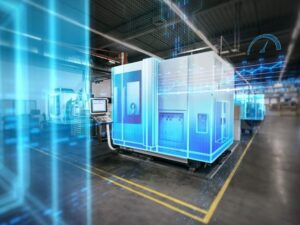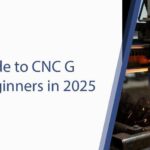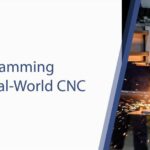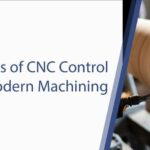The Latest Technological Developments and Trends in Lathe Works
Lathe work has long been the backbone of the metalworking industry. From traditional manual lathes to modern CNC-driven systems, the evolution of turning operations has dramatically improved speed, accuracy, and efficiency.
Today, the integration of digitization, automation, and artificial intelligence (AI) is transforming lathing into an intelligent, interconnected process central to Industry 4.0 manufacturing.
This article explores the latest advancements and trends that are shaping the future of turning operations — from multi-axis machining to hybrid manufacturing technologies.

The Evolution of Modern Turning Technology
Modern turning machines have evolved beyond basic cutting operations to become multifunctional machining centers capable of handling highly complex geometries. These machines now support operations such as milling, drilling, and tapping, all within a single setup, saving time and increasing precision.
One of the most significant advancements is the rise of five-axis turning machines. By allowing simultaneous motion along multiple axes, these machines eliminate repeated repositioning, reducing cycle times and the risk of setup errors.
This capability is particularly beneficial for high-precision industries such as aerospace, automotive, medical devices, and energy.
Multifunctional machines not only enhance flexibility but also reduce floor space and lower operational costs, providing an edge for manufacturers focused on efficiency and scalability.
Digitization and Industry 4.0 Integration
The implementation of Industry 4.0 principles has revolutionized how turning operations are managed. Through IoT-enabled sensors, real-time data collection, and digital communication between machines, modern lathes have become smart, interconnected systems.
Key innovations include:
- Predictive maintenance: IoT sensors analyze vibration, temperature, and spindle data to detect potential faults before they occur.
- Data-driven optimization: Machine performance data is used to refine parameters, improving tool life and energy efficiency.
- Digital twin technology: A virtual replica of the lathe enables simulation, testing, and optimization before physical production.
These technologies minimize downtime, enhance reliability, and contribute to sustainable, cost-efficient production ecosystems.

The Power of Automation in Turning Operations
Automation has become one of the most transformative forces in modern lathing. Automated loading and unloading systems, robotic arms, and cellular manufacturing setups enable continuous, lights-out production with minimal human intervention.
Benefits of automation include:
- Reduced human error: Robots perform repetitive tasks with consistency.
- Increased productivity: Continuous operation across multiple shifts.
- Lower operational costs: Reduced labor dependence and higher machine utilization.
Moreover, interconnected automated cells allow multiple lathes to work in sync, streamlining multi-part production while ensuring precision and quality in every cycle.
Processing Next-Generation Materials
With industries demanding lighter, stronger, and more resilient materials, turning technology has adapted to handle titanium, Inconel, carbon fiber, and advanced composites.
Technological improvements include:
- Coated cutting tools: Increase wear resistance and extend lifespan.
- High-pressure coolant systems: Control heat buildup, improving surface finish.
- Adaptive machining parameters: Automatically adjust cutting conditions for material hardness.
These developments allow manufacturers to meet strict tolerance requirements and maintain tool integrity, even with challenging materials used in aerospace or energy applications.
Artificial Intelligence and Machine Learning in Turning
Artificial Intelligence (AI) and Machine Learning (ML) are redefining the boundaries of what’s possible in turning operations. Through intelligent algorithms, machines can now analyze data, predict issues, and self-optimize during production.
AI-driven systems enhance efficiency by:
- Predicting tool wear and automatically scheduling replacements.
- Detecting vibration or chatter to adjust speeds in real time.
- Reducing energy consumption through smart power management.
These innovations enable autonomous machining environments, where turning machines continuously learn and adapt, delivering precision without constant operator oversight.

Hybrid Manufacturing — Turning Meets Additive Technology
The fusion of turning operations with additive manufacturing (3D printing) has led to the rise of hybrid manufacturing — a game-changer for prototyping and low-volume production.
In hybrid systems, parts are first 3D printed layer by layer, and then precision-machined using turning operations. This combined approach:
- Saves material by reducing waste.
- Accelerates prototyping for complex geometries.
- Improves design flexibility while maintaining CNC-level precision.
This integration is particularly advantageous for aerospace, medical, and custom tooling applications, where intricate designs require both freedom and precision.
Conclusion — Radonix and the Future of Turning Innovation
Technological advancements in lathe operations are reshaping how manufacturers think about production — merging automation, AI, and additive manufacturing into one cohesive ecosystem.
Radonix is at the forefront of this transformation, offering cutting-edge CNC solutions that combine smart connectivity, real-time analytics, and hybrid process integration.
By investing in innovation, Radonix helps industries achieve:
- Faster, more flexible production cycles.
- Reduced downtime through predictive intelligence.
- Sustainable, high-precision results across every application.
As the industry moves toward the next era of smart manufacturing, Radonix continues to drive progress — turning traditional lathe operations into intelligent, future-ready systems.
Contact Us:
- E-Mail: info@radonix.com
- Phone: +90 (553) 920 5500








